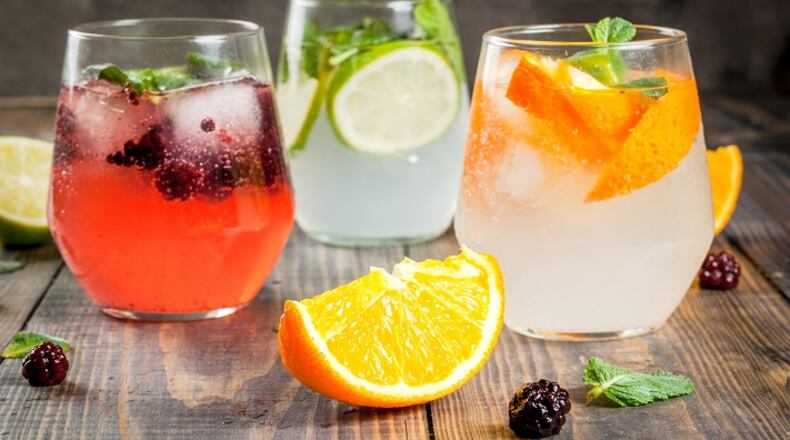The gin and tonic cocktail has a uniquely English-Indian pedigree. As malaria dogged the employees of the East India Co. in 18th century India, the employees turned to tonic blended with that era’s tipple of choice, gin, to stave off the disease. (The quinine in tonic is an anti-malarial alkaloid.)
Later, though, it was the more expressive Spaniards who upped the exuberance factor for a drink they came to call “gin-tonics.” They migrated the drink from a slender Collins glass to a giant-bowled stemmed glass filled with ice, then upped the ratio of gin to tonic — from about 1:2 to 2:3 or 3:4 — and garnished the drink with disparate combinations of fruit and herbs that sometimes mirrored the botanical notes of gin.
Consequently, Spanish-style gin tonics are a blank canvas for your imagination. If you can dream it, you can do it — adding grapefruit and mint, or raspberries and thyme, or peaches or gooseberries or even figs. The resulting cocktail is drinkable art, sort of like an aquatic diorama.
Because of their reliance on fresh fruit and botanicals, Spanish gin tonics are made for spring and summer. They’re also really easy to put together: Drop a few of your chosen garnishes into a wide-mouthed wine glass (my favorite combo right now is sliced strawberries, a few basil leaves and a grind of white pepper). Pour over maybe three ounces of gin — London dry gin, such as Bombay or Tanqueray, works best — and let it sit for a few minutes so the flavors mingle. Fill the glass with the largest ice cubes that will fit (for minimal meltage) and top with tonic. It’s important that the tonic is fresh — just opened and really fizzy — and of high quality. (I like 7.5-ounce cans of Q Tonic). Spritz over some citrus, and you’re set with a slow sipper that’s a looker, too.
About the Author
The Latest
Featured


